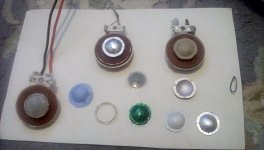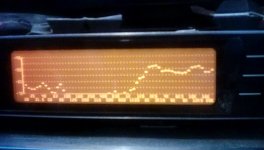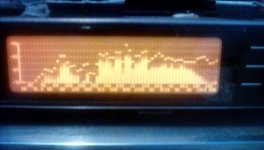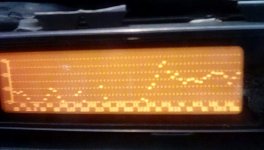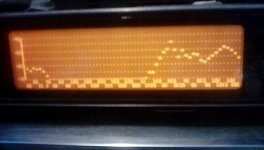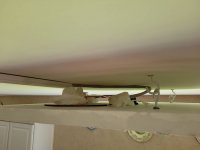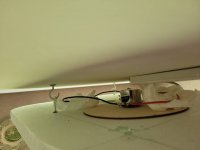Can mounting orientation have an effect on an exciter's low end capabilities?
I have some DAEX25SHF*4s mounted on top of XPS panels facing down (hung from the ceiling). I'm getting some breakup around the ~100-400Hz range at pretty moderate volumes. Obvious thing to do would be to take them down and see if I get that breakup in a horizontal position but that's going to be a little bit of a hassle. I figured I'd ask and also ask on suggestions to deal with it.
I have some other exciters I can possibly add on to utilize in a 2 way setup but I'm not sure if those will be any better to cover the low end. So some recommendations on that end would be helpful too. I need them to be 4 ohm. Thinking about the DAEX32EP-4s as my "midbass" exciters (though it looks like they are out of stock until August)
I have some DAEX25SHF*4s mounted on top of XPS panels facing down (hung from the ceiling). I'm getting some breakup around the ~100-400Hz range at pretty moderate volumes. Obvious thing to do would be to take them down and see if I get that breakup in a horizontal position but that's going to be a little bit of a hassle. I figured I'd ask and also ask on suggestions to deal with it.
I have some other exciters I can possibly add on to utilize in a 2 way setup but I'm not sure if those will be any better to cover the low end. So some recommendations on that end would be helpful too. I need them to be 4 ohm. Thinking about the DAEX32EP-4s as my "midbass" exciters (though it looks like they are out of stock until August)
cheapvega,
What do you mean by "breakup"? Are you sure it is the exciter and not in your system? I experienced what may be the same thing my system, and my speaker wires where they were compressed at the amplifier was the problem. I cut off the ends of the wires, re-tinned them and re-inserted them, and the problem went away. It's worth the small effort.
What do you mean by "breakup"? Are you sure it is the exciter and not in your system? I experienced what may be the same thing my system, and my speaker wires where they were compressed at the amplifier was the problem. I cut off the ends of the wires, re-tinned them and re-inserted them, and the problem went away. It's worth the small effort.
Last edited:
This looks perfect for an exciter ;-)
iconic 1957 aston martin DBR2 gets futuristic remake with lightweight carbon fiber body
So where do we get "aerogel insulation"?
At the NASA store?
Hmmm... plexiglass wind screen too, lots of possibilities.
That’s a beautiful replica. Why bother to use space age materials on a car originally with probably a ladder frame? I don’t think monocoque construction came around until early 1960’s with Lotus 25.
I have held crosslinked NASA aerogel (the firm type) in my hands. It is far out stuff. Light weight, porous, but optically transparent like a glue stick.
Krk,
Can you imagine that body with today's technology? In 2009, VW introduced a concept diesel car at the Frankfort Auto Show that weighed 837 lbs and got 170 mpg! Put that body on it, use F1 concepts on the frame and further body refinements, and who knows? However, in 1957, a Canadian scientist, Brian Hocking, did a study on honey bees, to see how far they could go on a belly full of honey. He tied one to a stick, then let them eat honey until full, then measured how far they flew. It was 64 kilometers, or 39.77 miles! Calculating up to mpg, that's a mere 4,704,280 mpg!!! Too bad we can't convert the bee metabolism to an engine, eh? Cars would come with a 1 liter honey tank sealed into the car, and after the car was all used up, there would be a bunch of honey left in the tank!
Can you imagine that body with today's technology? In 2009, VW introduced a concept diesel car at the Frankfort Auto Show that weighed 837 lbs and got 170 mpg! Put that body on it, use F1 concepts on the frame and further body refinements, and who knows? However, in 1957, a Canadian scientist, Brian Hocking, did a study on honey bees, to see how far they could go on a belly full of honey. He tied one to a stick, then let them eat honey until full, then measured how far they flew. It was 64 kilometers, or 39.77 miles! Calculating up to mpg, that's a mere 4,704,280 mpg!!! Too bad we can't convert the bee metabolism to an engine, eh? Cars would come with a 1 liter honey tank sealed into the car, and after the car was all used up, there would be a bunch of honey left in the tank!
Last edited:
I almost thought this was a DML until they took the grill off.
Ikea and Sonos announce picture frame speaker, coming July 15th for $199 - The Verge
Ikea and Sonos announce picture frame speaker, coming July 15th for $199 - The Verge
cheapvega,
What do you mean by "breakup"? Are you sure it is the exciter and not in your system? I experienced what may be the same thing my system, and my speaker wires where they were compressed at the amplifier was the problem. I cut off the ends of the wires, re-tinned them and re-inserted them, and the problem went away. It's worth the small effort.
Maybe not breakup... it sounds like clipping/distortion. The signal isn't being interrupted, just clipped.
cheapvega,
That's what I was talking about. The signal sounded degraded, like it was over-driven or something. It wasn't all the time, either. It turned out that the wires were badly tarnished, and many strands were broken on the inside of the bundle, so the connection was being badly degraded, so there was a huge resistive (and probably capacitive) load there. When I redid the wire ends, the difference was like night and day. In fact, I had just sent an amplifier back as being bad because one of the channels had even stopped working. When this identical amplifier did the same thing, I looked closer, and found the bad wire connections. The amplifier sits on my computer desk, so I was probably bumping the desk just right to move the wires to make or break the connections just so, hence the intermittent problem. One of those classic examples of taking the car problem to the mechanic and it not duplicate the problem.
That's what I was talking about. The signal sounded degraded, like it was over-driven or something. It wasn't all the time, either. It turned out that the wires were badly tarnished, and many strands were broken on the inside of the bundle, so the connection was being badly degraded, so there was a huge resistive (and probably capacitive) load there. When I redid the wire ends, the difference was like night and day. In fact, I had just sent an amplifier back as being bad because one of the channels had even stopped working. When this identical amplifier did the same thing, I looked closer, and found the bad wire connections. The amplifier sits on my computer desk, so I was probably bumping the desk just right to move the wires to make or break the connections just so, hence the intermittent problem. One of those classic examples of taking the car problem to the mechanic and it not duplicate the problem.
Last edited:
XRK,
Yes, you would have thought they would have done a little more research. 1), they could have very cheaply made them battery powered and Bluetooth. 2), DML with a damping surface for the back would have probably made them sound better, and they could have combined 1). above, as a kit with an optional blank surface with instructions on how to prepare the surface for you to do your own art.
Yes, you would have thought they would have done a little more research. 1), they could have very cheaply made them battery powered and Bluetooth. 2), DML with a damping surface for the back would have probably made them sound better, and they could have combined 1). above, as a kit with an optional blank surface with instructions on how to prepare the surface for you to do your own art.
Tweeter measurements.
I was getting a bit bored with all the hot weather we have been having.
So decided to make a few tweeter tests using exciters.
Pic 1.
Is a selection of different materials and three exciter already installed.
Pic 2.
Is toilet paper soaked in pva while using peak hold and pink noise showing good response down to 1.5k,within approx +- 2.5db up to at least 20k.
Pic 3.
Is with the full panel from the side on the right to see if the levels matched.
Pic 4.
Is a thin aluminium foil,peak at 2.5k and rolls off sharply, this peak is the spider I believe.
Pic 5.
Is brown wrapping paper.
Damping is only on the toilet paper so far,there is a general hump in the response above about 10k maybe this will sort this problem on the others?
It's good to see that the tweeter is still helping with the sound all the way down to at least 2k if needed.
This will work very well with thinner types of panels which have problems with hf.
It can also work with xps, if not too thick,or thinned a little with a cone shape ?
Care needs to be taken for good results.
This also helps sorts out problems within the coil area.
Steve.
I was getting a bit bored with all the hot weather we have been having.
So decided to make a few tweeter tests using exciters.
Pic 1.
Is a selection of different materials and three exciter already installed.
Pic 2.
Is toilet paper soaked in pva while using peak hold and pink noise showing good response down to 1.5k,within approx +- 2.5db up to at least 20k.
Pic 3.
Is with the full panel from the side on the right to see if the levels matched.
Pic 4.
Is a thin aluminium foil,peak at 2.5k and rolls off sharply, this peak is the spider I believe.
Pic 5.
Is brown wrapping paper.
Damping is only on the toilet paper so far,there is a general hump in the response above about 10k maybe this will sort this problem on the others?
It's good to see that the tweeter is still helping with the sound all the way down to at least 2k if needed.
This will work very well with thinner types of panels which have problems with hf.
It can also work with xps, if not too thick,or thinned a little with a cone shape ?
Care needs to be taken for good results.
This also helps sorts out problems within the coil area.
Steve.
Attachments
Hi Spedge,
Great work on making your own dome tweeters. So are you suggesting we make a round hole where the exciter is installed and put a dome tweeter to let the HF come through?
I know it’s convenient to use the spectrum analyzer display on your DSP amp but really hard to see. Have you ever tried REW software? It’s really easy and makes much nice clearer and more usable graphs. Check it out sometime. You have a microphone already. Any sound card can work.
Great work on making your own dome tweeters. So are you suggesting we make a round hole where the exciter is installed and put a dome tweeter to let the HF come through?
I know it’s convenient to use the spectrum analyzer display on your DSP amp but really hard to see. Have you ever tried REW software? It’s really easy and makes much nice clearer and more usable graphs. Check it out sometime. You have a microphone already. Any sound card can work.
Xrk971.
Having the inner coil area as a dome helps sort out a few problems.
1, less noise from within the coil area,as long as you take care to reduce the noise from the dome of course .
2, a clearer less distorted sound, and extended hf .
3, improve the primary wave to better blend with the dml.
Shelley Katz of podium thinks that using piston drivers with dml improves the sound,This I believe Does both using one exciter?
The problem with the way these exciters are designed, is the spider noise and the cavity between the magnet and the dml which also produces quite bad noise.
The first dome I made was concave,similar to a focal tweeter,it looked great,the cavity Noise from this was unbearable,from the back air hole and the front!
Noise is also produced in the central area by the inwards firing hf on a flat dml panel, crashing in the centre and bouncing around everywhere,causing peaks and suck outs .
Once the hf has gone through a thick ,hard or soft material it doesn't sound quite right to me.
I still wonder if a powerful peizo driver on the front of a light panel material might be a better option?
My microphone is an xlr ,so I would need to do a lot of fiddling about with computers ,soundcards ,and this wouldn't really help me at all and could start to get expensive ,let alone The time needed to learn how to use it.
It took me long enough to figger out how to digitize my LPs.
The main problem is picture quality ,I can't upload pictures from my phone, as the quality is too high for this site.
So I use my kindle camera for my deq photos as a rough guide only on this site.
Sorry.
Steve.
Having the inner coil area as a dome helps sort out a few problems.
1, less noise from within the coil area,as long as you take care to reduce the noise from the dome of course .
2, a clearer less distorted sound, and extended hf .
3, improve the primary wave to better blend with the dml.
Shelley Katz of podium thinks that using piston drivers with dml improves the sound,This I believe Does both using one exciter?
The problem with the way these exciters are designed, is the spider noise and the cavity between the magnet and the dml which also produces quite bad noise.
The first dome I made was concave,similar to a focal tweeter,it looked great,the cavity Noise from this was unbearable,from the back air hole and the front!
Noise is also produced in the central area by the inwards firing hf on a flat dml panel, crashing in the centre and bouncing around everywhere,causing peaks and suck outs .
Once the hf has gone through a thick ,hard or soft material it doesn't sound quite right to me.
I still wonder if a powerful peizo driver on the front of a light panel material might be a better option?
My microphone is an xlr ,so I would need to do a lot of fiddling about with computers ,soundcards ,and this wouldn't really help me at all and could start to get expensive ,let alone The time needed to learn how to use it.
It took me long enough to figger out how to digitize my LPs.
The main problem is picture quality ,I can't upload pictures from my phone, as the quality is too high for this site.
So I use my kindle camera for my deq photos as a rough guide only on this site.
Sorry.
Steve.
Xrk971.
To be honest, I'm more interested in how the panel sounds , hence the recordings I make.
I find it unnecessary to use EQ apart from level matching my sub ,as I can get pretty flat responses already.
I haven't tried it on ply as its not my favourite material because of its weight, but a dome on a ply panel could improve the sound performance above say 3k.
Hollow materials like honeycomb are a problem .
I'm getting the impression that making the cavity behind the cone bigger, lowers the resonance .
A couple of years ago I did put some foam in there but that didn't work well.
The 5mm xps which I reduced some time ago to about 2 or 3 mm in the coil area ,then glued the dome to the front of the foam ,which seams to work well ?
It's a litter difficult to tell when comparing the two as having the panel in place helps block most of the exciter noise.
I think one of the reasons I prefer eps could be that the exciter has to do very little to produce vast amouts of sound , so the exciter noise is lower?
Card panels are cheap and easy to produce,and work well with this method and are easy to drive.
The art panel could work too, you could still paint over the dome if you wanted.
Plenty of options.
Steve
To be honest, I'm more interested in how the panel sounds , hence the recordings I make.
I find it unnecessary to use EQ apart from level matching my sub ,as I can get pretty flat responses already.
I haven't tried it on ply as its not my favourite material because of its weight, but a dome on a ply panel could improve the sound performance above say 3k.
Hollow materials like honeycomb are a problem .
I'm getting the impression that making the cavity behind the cone bigger, lowers the resonance .
A couple of years ago I did put some foam in there but that didn't work well.
The 5mm xps which I reduced some time ago to about 2 or 3 mm in the coil area ,then glued the dome to the front of the foam ,which seams to work well ?
It's a litter difficult to tell when comparing the two as having the panel in place helps block most of the exciter noise.
I think one of the reasons I prefer eps could be that the exciter has to do very little to produce vast amouts of sound , so the exciter noise is lower?
Card panels are cheap and easy to produce,and work well with this method and are easy to drive.
The art panel could work too, you could still paint over the dome if you wanted.
Plenty of options.
Steve
There's a lot of cheap stuff I will try. Rubber hose, foam tubing insulation etc. Initially I was thinking about clamping the hooks together, but it will be much easier and more serviceable to just isolate them. Hopefully my idea works... I would love to be able to lower the LP filter as well as enjoy some upper midbass at higher volumes.
Also going to start on the second pair of panels and work on a fabric cover to make them look nice.
Also going to start on the second pair of panels and work on a fabric cover to make them look nice.
Hi everyone,
Long-time reader (periodically), first-time poster (as far as I recollect).
Firstly, I would like to thank all the contributors to this thread for sharing so much information and experience for people like me to learn from.
I'm late to the party with this DML caper, having only really found out about it a couple of weeks ago. It sounds like fun and I'm keen to try some designs for myself.
I'll outline my project ambitions and thought processes below, followed by some questions and issues I'm hoping to resolve. If anyone is inclined to read on and has knowledge that might assist then I would be grateful for input.
Goal
I'm hoping ultimately to construct a stereo pair of DML speakers that also serve as wall hanging art, specifically photographic print art. I don't want the artwork to compromise the sound quality of the speakers, and I wish for the speaker components to not degrade the appearance of the artwork.
Thoughts on implementation
After reading this thread and other materials my first thought was to make some DML panels based on proven implementations (e.g. EPS, plywood, honeycomb composite), and then affix the photographic prints on the front with adhesive. I'm not convinced that this approach would provide a good presentation of the artwork, absent a level of craftsmanship that may be beyond me. I also don't know what affect the layer of photographic paper on the front of the DML panel might have on the sound reproduction.
My second thought was to experiment with some photographs I already have, and convert them into DML speakers. I have a couple of prints that I'm not particularly attached to that I think might be worth playing with:
1. A canvas print (122cm x 66cm), unframed and mounted on heavy stretcher bars;
2. A photograph printed directly on aluminium sheet material, 75cm x 50cm.
1. Canvas print
I have read much on this thread about DML panels made from a painter's canvas with a smaller timber panel affixed to the rear surface that is driven by the exciter. Based on that reading the canvas print seems to be a good candidate, although I have some reservations.
The print is on sheet material that is probably synthetic rather than cotton canvas. I had it mounted by a local expert so it is well stretched and reasonably taut, but I don't know of any way to make it tighter if that were necessary for sound quality. The stretcher bars are nice and solid and have a cross-brace, so they are well suited to support a spine on which to mount one or more exciters.
My main concerns with this approach are whether the sheet material carries enough tension and whether the timber panel attached to the rear surface will cause a visible defect from the front. The latter issue may depend on the adhesive used to attach the timber panel to the 'canvas'. If this approach is the best way to go, I would like to use smaller prints (e.g. something like 80cm x 60cm) and make a matching pair.
2. Aluminium sheet print
This print has a 1.2mm thick sheet aluminium substrate with a rectangular mounting frame attached to the rear, recessed from the edges by about 5cm.
In order to experiment with this panel I think it will first be necessary to remove the existing mounting frame. If that seems too hard, I may just order another print and ask them to not put a mounting frame on it.
I have in mind a final result that looks something like the Soundwall Nova.
I figure the plain Al sheet substrate will be too resonant for a good DML panel, so I'm thinking:
a) construct a new rear frame recessed from the panel edge by about 1cm and attach it to the rear of the panel with a layer of viscoelastic material in between (i.e. a level of constrained layer damping around the edges of the panel);
b) cover the rest of the rear panel surface with a layer of EPS (thickness 10mm?) attached with adhesive, to reduce ringing;
c) mount the exciter on a cross-member attached to the frame, perhaps driving the rear surface of the Al sheet material through a cut-out in the EPS layer.
At this stage I'm planning to use Dayton DAEX30HESF-4 exciters (all the other decent ones seem to be on back-order). I plan to use a Arylic 2.1 D-class amplifier (50+50+100W) to drive the DML panels along with a sub-woofer to fill in the low end. This amp includes DSP that I can potentially use to fine tune the DML speakers output, if things go well.
Finally, some questions that patient readers may have some knowledge of that would be helpful to me:
1) does anyone have experience with the effect on sound quality of affixing a photographic print (e.g. something like 400gsm paper) to the front surface of a DML panel otherwise known for good sound reproduction?
2) is it feasible to affix an exciter arrangement to the back of the canvas print without it showing at all from the front?
3) has anyone successfully made an Al sheet material DML, or listened to the Soundwall Nova? The Soundwall literature doesn't give much away in terms of frequency response for their speaker.
Cheers,
Chris
Long-time reader (periodically), first-time poster (as far as I recollect).
Firstly, I would like to thank all the contributors to this thread for sharing so much information and experience for people like me to learn from.
I'm late to the party with this DML caper, having only really found out about it a couple of weeks ago. It sounds like fun and I'm keen to try some designs for myself.
I'll outline my project ambitions and thought processes below, followed by some questions and issues I'm hoping to resolve. If anyone is inclined to read on and has knowledge that might assist then I would be grateful for input.
Goal
I'm hoping ultimately to construct a stereo pair of DML speakers that also serve as wall hanging art, specifically photographic print art. I don't want the artwork to compromise the sound quality of the speakers, and I wish for the speaker components to not degrade the appearance of the artwork.
Thoughts on implementation
After reading this thread and other materials my first thought was to make some DML panels based on proven implementations (e.g. EPS, plywood, honeycomb composite), and then affix the photographic prints on the front with adhesive. I'm not convinced that this approach would provide a good presentation of the artwork, absent a level of craftsmanship that may be beyond me. I also don't know what affect the layer of photographic paper on the front of the DML panel might have on the sound reproduction.
My second thought was to experiment with some photographs I already have, and convert them into DML speakers. I have a couple of prints that I'm not particularly attached to that I think might be worth playing with:
1. A canvas print (122cm x 66cm), unframed and mounted on heavy stretcher bars;
2. A photograph printed directly on aluminium sheet material, 75cm x 50cm.
1. Canvas print
I have read much on this thread about DML panels made from a painter's canvas with a smaller timber panel affixed to the rear surface that is driven by the exciter. Based on that reading the canvas print seems to be a good candidate, although I have some reservations.
The print is on sheet material that is probably synthetic rather than cotton canvas. I had it mounted by a local expert so it is well stretched and reasonably taut, but I don't know of any way to make it tighter if that were necessary for sound quality. The stretcher bars are nice and solid and have a cross-brace, so they are well suited to support a spine on which to mount one or more exciters.
My main concerns with this approach are whether the sheet material carries enough tension and whether the timber panel attached to the rear surface will cause a visible defect from the front. The latter issue may depend on the adhesive used to attach the timber panel to the 'canvas'. If this approach is the best way to go, I would like to use smaller prints (e.g. something like 80cm x 60cm) and make a matching pair.
2. Aluminium sheet print
This print has a 1.2mm thick sheet aluminium substrate with a rectangular mounting frame attached to the rear, recessed from the edges by about 5cm.
In order to experiment with this panel I think it will first be necessary to remove the existing mounting frame. If that seems too hard, I may just order another print and ask them to not put a mounting frame on it.
I have in mind a final result that looks something like the Soundwall Nova.
I figure the plain Al sheet substrate will be too resonant for a good DML panel, so I'm thinking:
a) construct a new rear frame recessed from the panel edge by about 1cm and attach it to the rear of the panel with a layer of viscoelastic material in between (i.e. a level of constrained layer damping around the edges of the panel);
b) cover the rest of the rear panel surface with a layer of EPS (thickness 10mm?) attached with adhesive, to reduce ringing;
c) mount the exciter on a cross-member attached to the frame, perhaps driving the rear surface of the Al sheet material through a cut-out in the EPS layer.
At this stage I'm planning to use Dayton DAEX30HESF-4 exciters (all the other decent ones seem to be on back-order). I plan to use a Arylic 2.1 D-class amplifier (50+50+100W) to drive the DML panels along with a sub-woofer to fill in the low end. This amp includes DSP that I can potentially use to fine tune the DML speakers output, if things go well.
Finally, some questions that patient readers may have some knowledge of that would be helpful to me:
1) does anyone have experience with the effect on sound quality of affixing a photographic print (e.g. something like 400gsm paper) to the front surface of a DML panel otherwise known for good sound reproduction?
2) is it feasible to affix an exciter arrangement to the back of the canvas print without it showing at all from the front?
3) has anyone successfully made an Al sheet material DML, or listened to the Soundwall Nova? The Soundwall literature doesn't give much away in terms of frequency response for their speaker.
Cheers,
Chris
Hi Chris,
Pretty straight forward to have photos printed directly onto you own aluminum composite panels (at least in NYC).
In NYC, a number of graphics shops will do this. They spray on a very thin light-sensitive photographic medium, then expose the panel.
The high end Italian design firm, Valcucine offers exactly this on aluminum honey core pantry doors.
I'd try making your own composite aluminum skinned panels from something like ...
-- See #3172 of this thread.
I think the
Readily available aluminum flashing laminated (maybe with contact adhesive) between something like SilveRboard or EPS and you would have a very rigid panel vs weight.
I plan something like this for my next DML project.
Note: I have repurposed Valcucine cabinet doors in my current DML iteration (and love them) -- much discussion of this on this thread.
Buying such panels new: probably $750-$1000 each.
Building your own with flashing and foam < $60 a pair.
Pretty straight forward to have photos printed directly onto you own aluminum composite panels (at least in NYC).
In NYC, a number of graphics shops will do this. They spray on a very thin light-sensitive photographic medium, then expose the panel.
The high end Italian design firm, Valcucine offers exactly this on aluminum honey core pantry doors.
I'd try making your own composite aluminum skinned panels from something like ...
...
SilveRboard.
$15 for a 1/2" x 4' x 8' sheet
faced with...
Aluminum flashing: Thickness: 0.0092 in.
$58 for a roll 20" x 50'
-- See #3172 of this thread.
I think the
would prove too heavy. Great rigidity, but a trade off in weight....1.2mm thick sheet aluminium substrate...
Readily available aluminum flashing laminated (maybe with contact adhesive) between something like SilveRboard or EPS and you would have a very rigid panel vs weight.
I plan something like this for my next DML project.
Note: I have repurposed Valcucine cabinet doors in my current DML iteration (and love them) -- much discussion of this on this thread.
Buying such panels new: probably $750-$1000 each.
Building your own with flashing and foam < $60 a pair.
Spedge'
Well, I finally got my DMLs up and running. I had expected that they would have sounded somewhat like your recording, so I put on Jennifer Warnes' "If It Be your Will", disconnected both sets of box speakers and turned the sub all the way down, then started play, then checked the amp to turn everything off, because I obviously didn't. But I had! My Goodness! The bass! The mid clarity! The volume! Everything was crystal clear and did I mention the bass! That song has thunderous bass as you know, and they did not miss a beat, and did not struggle, either! Wow! Just wow! I am blown away. I was going to supplement the boxes, but now I don't know if I will even bother to reconnect them, or the sub! I am now truly in the ranks of the believers! Amen!
Well, I finally got my DMLs up and running. I had expected that they would have sounded somewhat like your recording, so I put on Jennifer Warnes' "If It Be your Will", disconnected both sets of box speakers and turned the sub all the way down, then started play, then checked the amp to turn everything off, because I obviously didn't. But I had! My Goodness! The bass! The mid clarity! The volume! Everything was crystal clear and did I mention the bass! That song has thunderous bass as you know, and they did not miss a beat, and did not struggle, either! Wow! Just wow! I am blown away. I was going to supplement the boxes, but now I don't know if I will even bother to reconnect them, or the sub! I am now truly in the ranks of the believers! Amen!
- Home
- Loudspeakers
- Full Range
- A Study of DMLs as a Full Range Speaker
